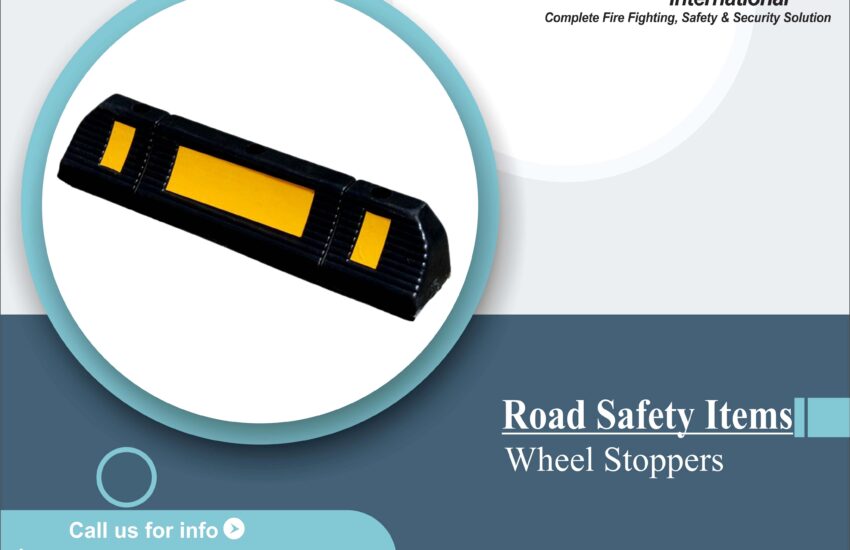Types of Wheel Stoppers, also known as parking blocks, car stops, or curb stops, are essential safety devices used in parking lots, garages, and other vehicle zones. These physical barriers are designed to prevent vehicles from rolling forward beyond designated spaces, helping to avoid collisions and ensuring orderly parking.
In this comprehensive guide, we’ll explore the different types of wheel stoppers, their specific uses, how to install them, and the key benefits they offer for parking lot management and safety.
What Is a Wheel Stopper?
A wheel stopper is a low barrier, typically made from concrete, rubber, plastic, or metal, placed at the end of a parking space. Its main purpose is to stop vehicles from going too far forward, preventing damage to surrounding vehicles, walls, sidewalks, or landscaped areas.
Types of Wheel Stoppers
Understanding the various types of wheel stoppers can help you choose the best option for your specific needs. Here are the most common types:
1. Concrete Wheel Stoppers
Concrete wheel stoppers are widely used in commercial parking lots and industrial facilities. They are:
- Heavy and durable
- Resistant to weather and impact
- Ideal for long-term installation
Keywords: concrete wheel stopper, heavy-duty wheel stopper, parking lot safety device
2. Rubber Wheel Stoppers
Rubber wheel stoppers are popular in both indoor and outdoor settings due to their flexibility and easy installation.
- Lightweight and portable
- Weather-resistant
- Made from recycled materials
Best suited for underground garages, residential areas, and temporary use.
Keywords: rubber wheel stopper, eco-friendly car stop, flexible wheel stopper
3. Plastic Wheel Stoppers
Plastic wheel stoppers are a cost-effective and lightweight alternative.
- Easy to install and move
- Brightly colored for high visibility
- UV and moisture resistant
Ideal for event parking, temporary lots, or light traffic areas.
4. Metal Wheel Stoppers
Metal wheel stoppers, often made from steel or aluminum, are extremely durable but less common.
- High-strength and secure
- Susceptible to rust in outdoor environments
- Used in specialty applications
Uses of Wheel Stoppers
Wheel stoppers serve a variety of purposes across different environments:
- Prevent Vehicle Overrun: Avoid accidents or damage caused by vehicles moving too far.
- Define Parking Spaces: Help drivers park precisely within designated spots.
- Enhance Pedestrian Safety: Prevent cars from intruding into pedestrian zones or sidewalks.
- Protect Property: Shield walls, poles, fences, or other infrastructure.
How to Install Wheel Stoppers
Installing a wheel stopper is a straightforward process, typically requiring basic tools and hardware. Here’s how:
Step-by-Step Wheel Stopper Installation Guide
- Choose the Right Location
Measure and mark where the wheel stopper will be positioned at the front of the parking spot. - Clean the Surface
Remove dust, dirt, or oil to ensure proper adhesion and secure anchoring. - Mark the Mounting Holes
Use the stopper to mark the locations where you’ll drill holes. - Drill Anchor Holes
Use a hammer drill and masonry bit if installing on concrete or asphalt. - Insert Anchors and Secure Stopper
Place the stopper over the holes and fasten using bolts or lag screws.
Maintenance of Wheel Stoppers
Regular maintenance ensures your wheel stoppers remain effective and safe over time.
Wheel Stopper Maintenance Tips:
- Inspect for Cracks or Damage: Check regularly for signs of wear and tear.
- Clean Surrounding Area: Remove debris to maintain visibility and functionality.
- Tighten Loose Fasteners: Ensure anchors or bolts remain secure.
- Remove Ice or Snow: In cold climates, keep wheel stoppers clear during winter months.
Benefits of Wheel Stoppers
There are several key benefits to installing wheel stoppers in parking lots, garages, or commercial facilities:
- ✅ Improved Parking Lot Safety
Creates a barrier that helps avoid vehicle collisions and pedestrian accidents. - ✅ Damage Prevention
Reduces the risk of vehicle and property damage. - ✅ Organized Parking
Clearly defines where each car should stop. - ✅ Cost-Effective Solution
Affordable compared to other safety infrastructure. - ✅ Easy to Install
Requires minimal tools and labor.
Conclusion
Choosing the right type of wheel stopper can enhance the safety, organization, and functionality of any parking area. Whether you’re managing a commercial lot, residential garage, or temporary event space, wheel stoppers are a cost-effective and practical solution.


